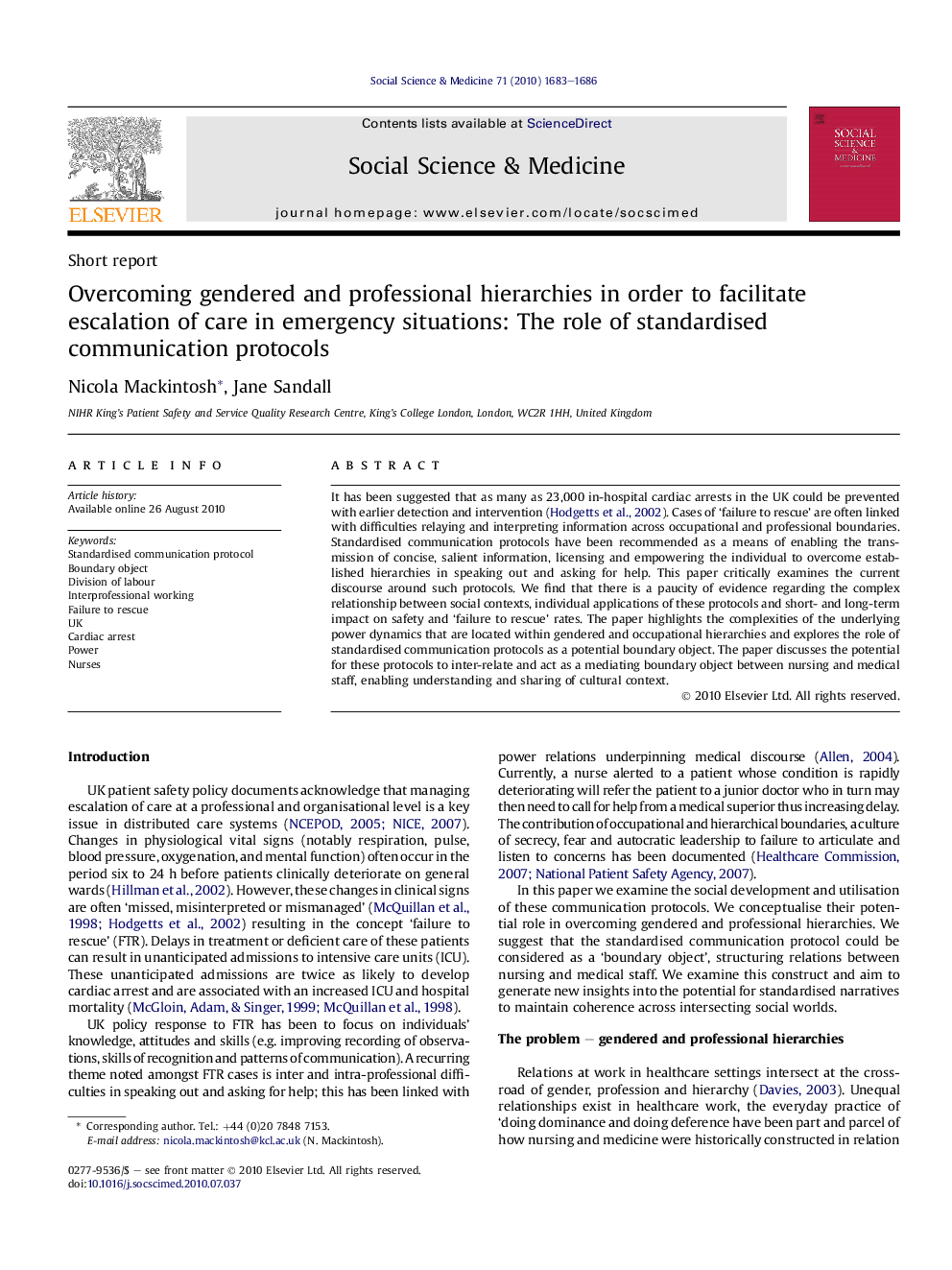| Article ID | Journal | Published Year | Pages | File Type |
|---|---|---|---|---|
| 952911 | Social Science & Medicine | 2010 | 4 Pages |
It has been suggested that as many as 23,000 in-hospital cardiac arrests in the UK could be prevented with earlier detection and intervention (Hodgetts et al., 2002). Cases of ‘failure to rescue’ are often linked with difficulties relaying and interpreting information across occupational and professional boundaries. Standardised communication protocols have been recommended as a means of enabling the transmission of concise, salient information, licensing and empowering the individual to overcome established hierarchies in speaking out and asking for help. This paper critically examines the current discourse around such protocols. We find that there is a paucity of evidence regarding the complex relationship between social contexts, individual applications of these protocols and short- and long-term impact on safety and ‘failure to rescue’ rates. The paper highlights the complexities of the underlying power dynamics that are located within gendered and occupational hierarchies and explores the role of standardised communication protocols as a potential boundary object. The paper discusses the potential for these protocols to inter-relate and act as a mediating boundary object between nursing and medical staff, enabling understanding and sharing of cultural context.
